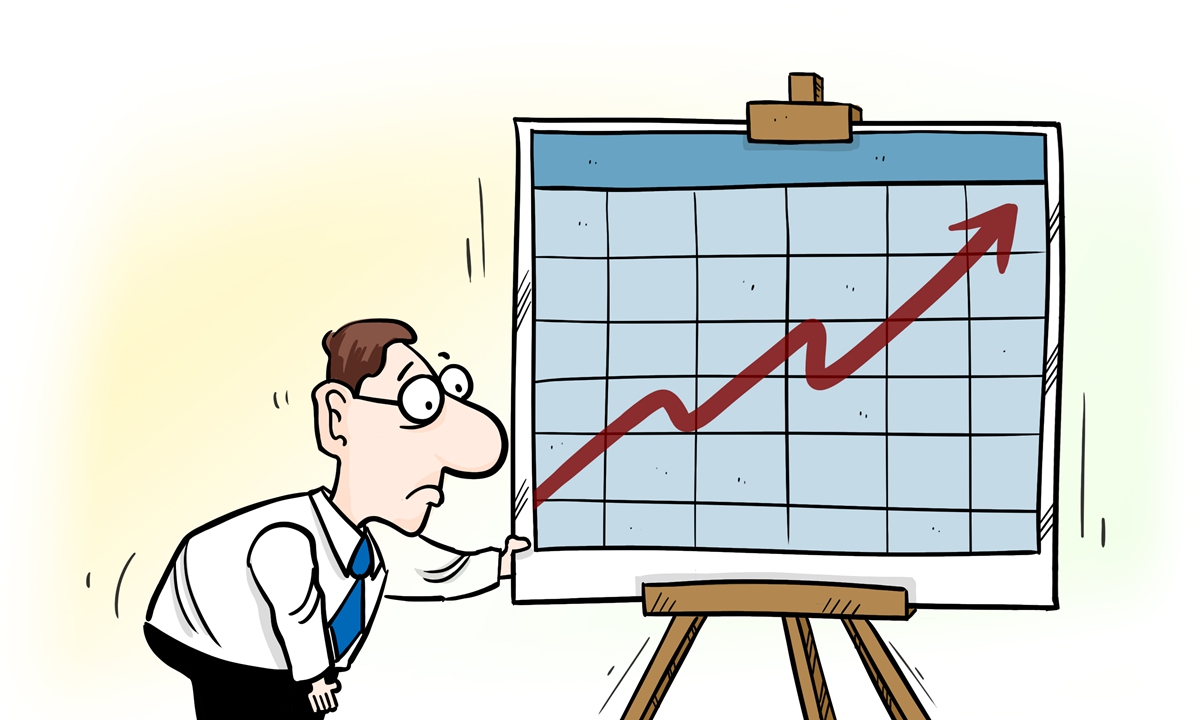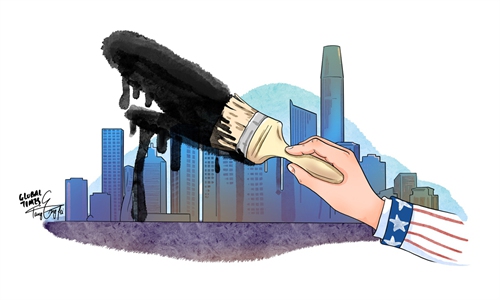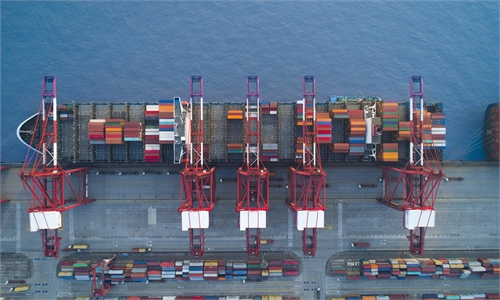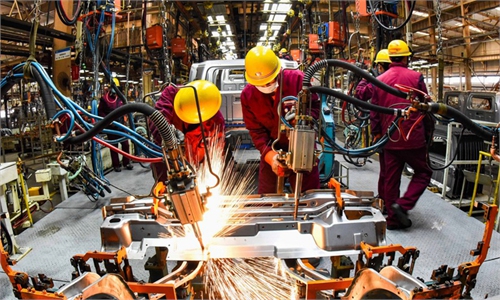COMMENTS / EXPERT ASSESSMENT
Chinese economic miracle to go on, disappointing Western naysayers

Illustration: Chen Xia/Global Times
Facing a myriad of uncertainties from the unabated global spread of coronavirus and the US-induced geopolitical tensions, China is ramping up efforts to ensure its juggernaut economy sail through churning high seas in early 2022. Internal investment and foreign trade will undoubtedly take the lead in propelling the country's continuous growth and prosperity.Unlike the US which is deeply embroiled in a whirlpool of inflation and pandemic mayhem, China's economy is in much better shape now. Domestic consumption is brisk, foreign demand for Chinese goods is strong, and the value of its currency, the yuan, is remaining elevated against a wide range of foreign currencies. The average monthly inflation in 2021 is maintained at less than 2 percent that enables China's central bank to keep a lower interest rate for 2022, and the country's enterprises to enjoy inexpensive lending costs to expand their business.
Following the annual Central Economic Work Conference (CEWC) in December, all Chinese provinces are on the move. Guangdong and Jiangsu, two of China's economic powerhouses, are increasing budgeted fiscal spending on important projects. Guangdong, whose GDP is comparable to South Korea, has planned an additional 900 billion yuan spending in 2022 to build up hundreds of notable capital investment projects in the province, including urban subway systems, intra-city fast rail transport system, new energy projects and 20 state-level strategic industrial bases. Shanghai, another engine of Chinese economy, has developed a detailed plan to integrate the Yangtze Delta provinces closer centering on new and high-tech innovation.
The CEWC has set the tone for "appropriate-level advanced infrastructure investments" by local governments in 2022, a new policy guideline that is poised to bring about a voluminous spell of capital investment projects.
China's past 40-year development history shows that whenever the country faces an economic slowdown headwind - such as the 1997 Asian financial crisis and the 2008-09 US subprime loans meltdown and subsequent global financial turmoil - Chinese policymakers have always counted on expanding internal infrastructure investment to reignite a new period of growth.
And, two financial features distinctive to China have provided the country this prized opportunity. One is Chinese households' extraordinary levels of savings, and the other feature is the central government's cherished ability to keep inflation down. If China's CPI were running at 6.8 percent as the US reported in November, China's central bank would have been forced to raise interest rates substantially, which would lead to stifled investment.
In 2022, China will face a dynamic and opportune macro environment. Unlike the US Federal Reserve which will find its hands trussed up and have to raise rates to curb runaway inflation, China's central bank moved to cut the one-year benchmark loan prime rate (LPR) on December 20 after releasing 1 trillion yuan extra liquidity to the country's banks and other big lenders. The divergent financial policy trends of the world's two largest economies apparently place China in the more favorable growth position.
And, the country is stepping up efforts to fortify foreign trade - another strong lever of China's GDP growth. To help other economies fight Covid19 pandemic and meet the surging demand of foreign consumers stranded at home, Chinese factories have worked around the clock to produce all kinds of medical materials and daily necessities, which contribute to a historical high of Chinese exports in 2021. Total exports in the first 11 months this year surged by 21.8 percent.
With the RCEP, the world's largest free trade zone, coming into effect in early 2022, China's foreign trade with Japan and ASEAN countries will reach new highs. Also, the country's mighty Belt and Road Initiative has fired up many lukewarm economies from Asia, Africa to the Middle East, Europe and Pacific islands which in return generate new impetus for China's foreign trade. It is believed that the iconic initiative, supported by China's ever bulging foreign exchanges reserve, will provide crucially needed funds to less developed economies and make those economies take off.
So, facing the "threefold economic pressures" including uncertain demand, supply shocks and weaker expectations, Chinese leadership's two-pronged "Internal and External Circulation" development strategy will come to the fore. The strategy, aided by the country's increasingly affluent 450 million middle-class consumption power, will set the bedrock for another five-year-long high-quality economic growth in China.
And, the country's demographics today give it a significant advantage over the US in terms of human capital running until 2035. As displayed by China's meteoric rise in space, 5G and AI technologies in the past few years, the country's quest for technological preeminence will never stop.
The Biden administration's expansive technology crackdown on Chinese companies will only harden Chinese leadership's resolve for technological self-sufficiency, like the recently launched rare-earth behemoth - China Rare Earth Group Corp. The consolidation of the crucial mineral resource industry will help maintain China's global competitiveness and give the country a trump card to play to deal with the US government's bullying.
The US government's combative or even hostile policies toward China will encourage the policymakers in Beijing to continue hedging their bets, rethinking China's national-security strategy and focusing more resources to shore up its science and technology sectors. To deflect the US' assault, China will also seek closer economic bonds with all non-US economies, like Russia, Germany, France, Italy, Japan, South Korea and Iran.
Elon Musk, founder of Tesla and the world's richest man, said earlier in December during an interview hosted by the Wall Street Journal that Chinese economy will surpass the US by two to three times. And, his prediction is well founded, considering China's non-stop growth since 1980, the people's entrepreneurship, and the Chinese government's unrivalled competency in navigating the economy in times of difficulty. There were always naysayers noting that China's economy was to crash, but history has proved them wrong.
The author is an editor with the Global Times. bizopinion@globaltimes.com.cn



